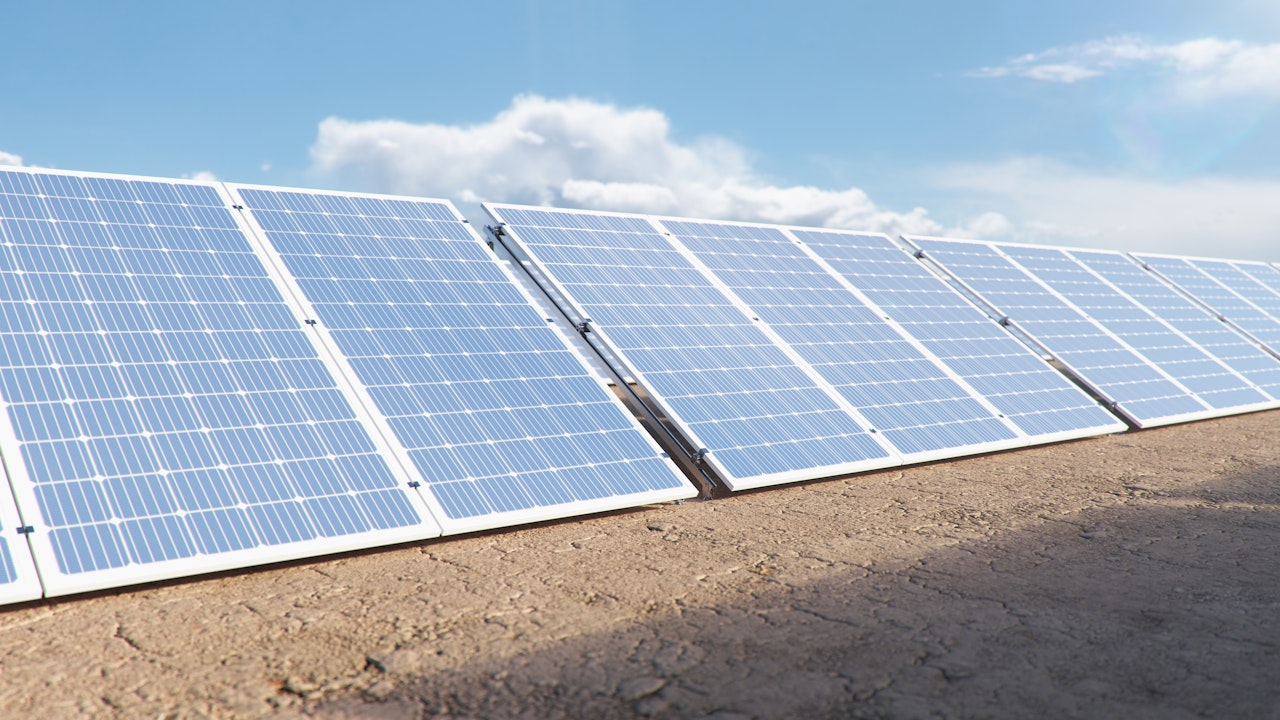- Solar energy blog
- Sustainable finance: international examples to follow
Sustainable finance: international examples to follow


Ghada Alafranji
Senior Account Executive
I started my career journey working as a part-time Project Engineer before graduating from university. I have worked on Solar-Diesel-Battery Hybrid systems and parallel to that I was in Business Development and this is why RatedPower is my perfect fit, I get to do the two most enjoyable things to me Engineering & Business.

Content
In recent years, whether or not a business has a positive impact on the environment has become an important consideration for investors and backers. Financial institutions have realized they have a role to play in facilitating the transition to clean energy and sustainability by directing their investments towards low-carbon and sustainable innovations.
Sustainable finance has the potential to become a driving force behind the expansion of solar power generation around the world. How? Let’s look at some examples of sustainable finance in action.

What is sustainable finance?
Sustainable finance involves investing in any activities that promote green energy, social inclusion, and good governance practices. Investment firms are developing innovative instruments that put their client funds to work on solving critical climate issues. These include renewable energy funds which invest in solar companies, as well as green and sustainability bonds to provide capital for projects from the debt markets.
Sustainable financing can provide green term loans for rooftop and ground-mounted solar facilities, facilitate acquisitions and financing of project portfolios by infrastructure funds, and invest in solar joint ventures.
There are questions about how investors can be sure that the businesses and projects they invest in meet their sustainability claims. In response, the International Financial Reporting Standards (IFRS) Foundation, which is responsible for developing global accounting standards, has established the International Sustainability Standards Board to define how investors can validate sustainability claims and direct capital to resilient businesses.
Watch the recording of out webinar to learn the role of financial analysis in the PV project early development stage and get key financial metric.
Why is sustainable finance important?
Sustainable finance can play a key role in the global net-zero transition by channelling private money into low-carbon projects, including solar power installations.
The European Union (EU), for example, aims to raise $1.14 trillion through its Green Deal Investment Plan to help the region reach net-zero emissions by 2050. The EU views sustainable finance as central to delivering on the policy objectives it set out under the European Green Deal, as well as its international commitments on climate and sustainability.
Sustainable finance in action
How is sustainable finance helping to facilitate the increased adoption of renewables in various parts of the world?
Gulf Cooperation Council (GCC)
The Gulf Cooperation Council (GCC) region is undergoing an economic transformation as its governments aim to transition away from oil and gas production towards more diversified sources of growth. The GCC is a political and economic union comprising Bahrain, Kuwait, Oman, Qatar, Saudi Arabia, and the United Arab Emirates (UAE).
GCC governments have made ambitious sustainability pledges in recent years and they will have a long way to go to reach those targets given the central role of fossil fuels in their economies. The six countries linked their power grids in 2012, which will help to integrate renewable generation without affecting the security and stability of supply.
Saudi Arabia has pledged to achieve net-zero carbon emissions by 2060 and plans to have solar and wind energy supply 50% of the electricity to its power grid by 2030. The government has launched projects such as NEOM, a $500 billion smart city that is now under construction and intended to run on 100% renewable energy. The Saudi Green Initiative also launched in 2021 — aiming to bring together programs for environmental protection, energy transition, and sustainability, “with the overarching aims of offsetting and reducing emissions, increasing the Kingdom’s use of clean energy and addressing climate change.” The initiative aims to cut carbon emissions by over 4% of global contributions and already has 17 renewable projects in development.
What’s more, in October, Saudi Arabia’s sovereign wealth fund, the Public Investment Fund, raised $3 billion from the sale of its first green bonds. The PIF will use the proceeds from the sale to finance and invest in green projects such as renewable generation. The fund has been directed to develop 70% of Saudi Arabia’s renewable energy program and is expected to invest over $10 billion in green projects by 2026.
The Middle East region accounted for only 0.3% of the green bonds issued worldwide in 2021, according to a report by consulting firm PwC’s Strategy& team. But the development of green finance will help to address a long-term decline in foreign direct investment (FDI) in the region relative to its gross domestic product (GDP).

International Bank for Reconstruction and Development (IBRD)
The International Bank for Reconstruction and Development (IBRD) helps to connect investors with projects that contribute to the United Nations’ Sustainable Development Goals (SDGs). The IBRD is the largest issuer of sustainable development bonds and uses the funds it raises to support development activities. In the 2022 financial year, IBRD raised around $41 billion in sustainable bonds. The bank also pioneered the green bond market and has issued almost $18 billion since it launched green bonds in 2008.
The IBRD provides technical assistance to develop green, sustainable capital markets. In the 2022 financial year, the bank facilitated Colombia’s sovereign green bond issuance and helped the government develop a taxonomy to identify projects eligible for financing from green bonds. It has also recently worked with Egypt and Indonesia on issuance.
International Platform on Sustainable Finance (IPSF)
The International Platform on Sustainable Finance (IPSF) was launched in 2019 by the European Union and seven other countries, which has since expanded to include 17 non-EU nations. The IPSF provides a forum for policymakers to work on increasing the amount of private capital that is invested in environmental sustainability. Members can “promote best practices, compare their different initiatives and identify barriers and opportunities of sustainable finance”.
In February 2022, IPSF formed a working group to “explore how sustainable finance alignment approaches such as taxonomies, labels and portfolio alignment metrics, as well as corporate strategy and disclosures may integrate transition considerations” to support the scaling up of capital flows and accelerate the low-carbon transition.
European Green Deal and Just Transition Mechanism
In January 2020, the European Commission introduced the European Green Deal Investment Plan, to invest at least €1 trillion to 2030 in the transition to a climate-neutral, green economy. Sustainable Finance is a crucial part of the European Green Deal, as the region will need private and public investments to meet its targets under the Paris Agreement and the SDGs.
“To meet our Paris targets, Europe needs between €175 to €290 billion in additional yearly investment in the next decades,” according to Valdis Dombrovskis, Vice-President in charge of Financial Stability, Financial Services and Capital Markets Union. “Yet, public money will not be enough. This is why the EU has proposed hard law to incentivise private capital to flow to green projects.”
The Just Transition Mechanism (JTM) is an important provision to ensure that the green transition is socially inclusive. It aims to facilitate the investment of around €55 billion from 2021-2027 to ease the socio-economic impact, such as in coal mining regions. The mechanism includes a budgetary guarantee under the InvestEU program and an advisory hub that is expected to bring in €10-15 billion in mostly private sector investments.
Work with RatedPower on your solar project
RatedPower's solar design platform helps to optimize solar projects that are key to accelerating renewable adoption. Visit our on-site resources for more insights into the low-carbon energy transition.
Latest stories
Related posts
Market analysis
Power where it’s needed: Solving LatAm’s grid instability with distributed solar and storage
Find out how a bottom-up approach is solving LatAm’s grid instability, with community-led solar and storage projects giving people control over their energy.
Updated 29 DEC, 25

Market analysis
Powering through the peak: Why solar + storage is gaining momentum in MENAT
Discover how MENAT is building a functioning solar economy and why rising peak demand during extreme heat is squeezing its energy architecture.
Updated 11 DEC, 25


Market analysis
The rise of utility-scale PV + storage plants in Italy
Discover how Italy’s latest policies and auctions are driving utility-scale solar and battery storage projects to meet ambitious 2030 targets.
Updated 4 DEC, 25

- RatedPower
- Solar energy blog
- Sustainable finance: international examples to follow
 Watch a demo
Watch a demo Ask our AI Product Expert
Ask our AI Product Expert
